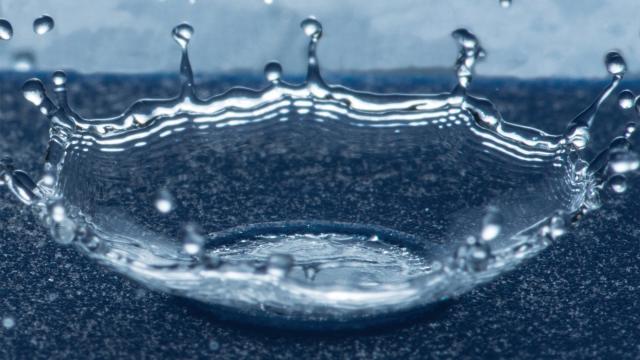We’ve already figured out how to treat surfaces so that liquids, such as spilled food or raindrops, quickly bead up and roll away. Every time you wax your car you’re helping it shrug off a downpour.
But for vehicles such as planes, it only takes a split second for a raindrop to turn to ice when it hits a freezing fuselage, creating safety risks on the aircraft. To combat this, researchers at MIT have found a way to make water-repellent surfaces better shed a soaking.
The new method builds on research from about six years ago when it was discovered that small macroscopic features added to a surface, such as a series of nearly imperceptible ridges, helped break up a water drop’s shape and symmetry as it recoiled from an impact, increasing the speed at which it bounced away from that surface.
The amount of time a drop was in contact with a surface was reduced by about 40 per cent, which also reduced the amount of time there was for thermal exchange. In other words, it reduced the risk of raindrops having enough time to turn to ice.
But water drops impact a surface very similar to how a water balloon slams into someone’s face — they spread out on impact which radically increases the area of contact between them.
That can not only accelerate the freezing process on an aeroplane’s wing, for example, it can also be problematic in areas where corrosive salt can build up on a surface as ocean spray slams into a structure and quickly evaporates.
The ridge pattern applied to surfaces was effective at making water drops bounce away faster, but MIT engineers have now found that more complex structures, such as bowl-shaped rings, have the added effect of minimising how far a droplet can spread before it bounces away.
When a droplet hits the macroscopic structure it spreads out and fills it, but only until it hits the bowl’s edge, at which point it’s deflected upward and ultimately away from the surface. The amount of spread isn’t being reduced, but since it’s being deflected away there’s minimal interaction between it and the treated surface — which was the ultimate goal here.
The effectiveness of this structure does depend on its size, and the size of the droplet that’s making an impact, but even if every drop isn’t quickly bounced away, overall there’s still a definite improvement.
Aside from reducing ice build up on aeroplanes, or even the giant sweeping blades of a wind turbine, this research could also benefit waterproof garments, which are a big market for hydrophobic materials.
The ring structures could be incorporated into many materials, such as fabrics (not just the metal wrapping a plane’s fuselage) for which quickly shedding water also helps improve a waterproof garment’s breathability by keeping pores open and clear.
